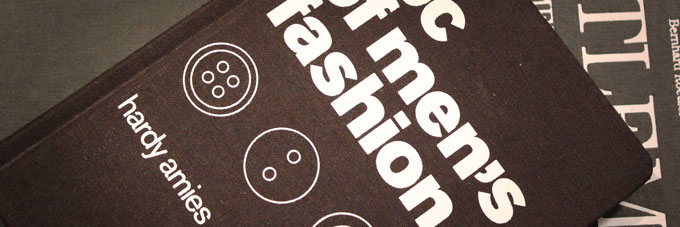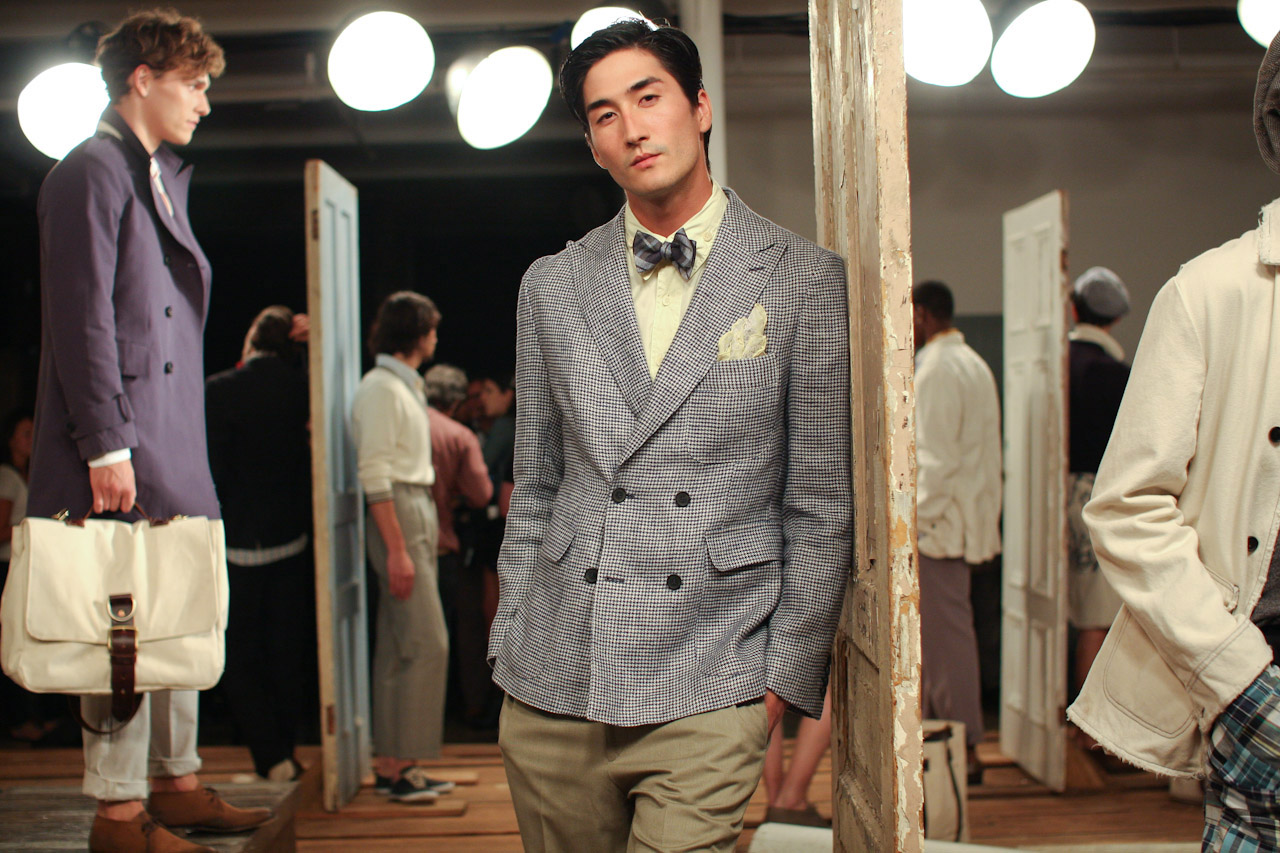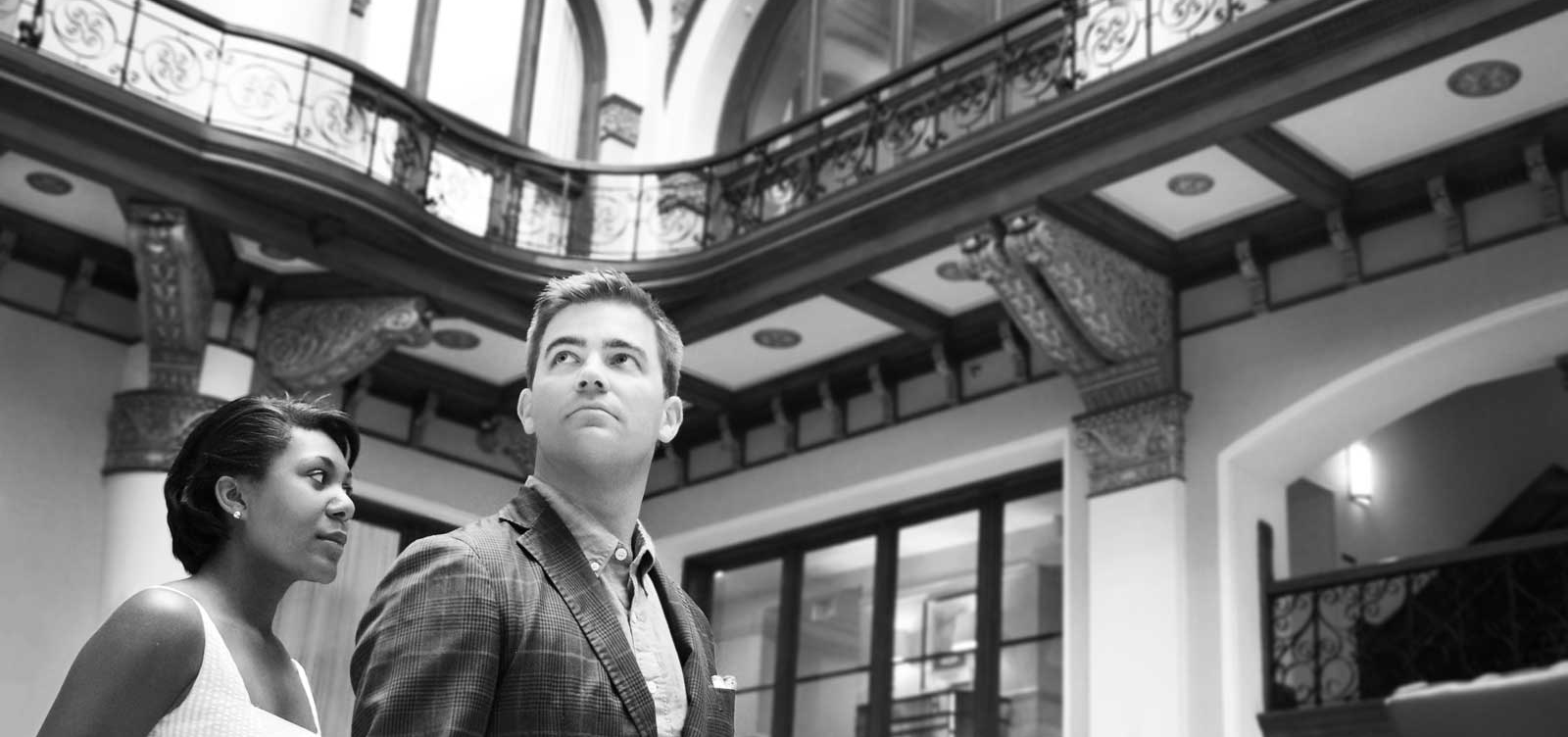
Today we take a quick look at how a Gentleman buttons his garments. There are an abundant number of ways to spend frivolous quantities of money on high quality clothes and fashion – in fact countless – only to waste such craftsmanship on the way one happens to wear them. With vests (waistcoats) or jackets, the latter predicate should never occur… a Gentleman wears a jacket with purpose. He doesn’t happen to wear it.
Form and Function
When a jacket is first chalked and cut, or designed in any manner, the drape and shape is built largely around three pivotal points: each shoulder and the waist where it connects. The waist button affects the entirety of the form as much as it is there for function. Whether there is one button or six, the waist button is what the tailor builds to. It shapes the outer silhouette as well as directs the spectator’s eyes upward from the “V” of the jacket toward the Gentleman’s face.
Whenever a Gentleman is standing, he certainly buttons the waist button. Then of course when he goes to sit, he unfastens it to hang freely on either side of his seat.

Now what of the other accompanying buttons? For the digest version, here’s a quick breakdown:
Standard Jackets:
- Standard Two Button Jacket: Top (waist button) only
- Standard Three Button Jacket: Middle (w) always, top sometimes, bottom never
- Sometimes: if your lapel has a curve below or at the top button (ie. The top button is hidden), your jacket is probably cut to fall well with only the middle button. However, if the fold is above the top button, you can likely button both the top two of the three.
- Four, plus: follow the same rules as the Three Button
Double-breasted (including overcoats):
- Four Button (low – ie. the top buttons are functional): Button the top two (one inside, one out)
- Four Button (high): Button the bottom two as these are probably the only functional points
- Six Button: Button the middle two, assuming the jacket is cut with these two at the waist.
- Six High Button or More: You should not wear this jacket.
The History of the Bottom Button and How It Won Its Freedom
Though style is hinged upon form and function, many origins were derived of a particular fashion. In the case of the bottom button, it was fashion-follows-form. British King Edward VII, son of Queen Victoria and long deprived of official power, spent much of his time in the social light. He was a fashion icon in particular, but with age he found that his waistcoasts and jackets were becoming problematic for his weight. For as the jacket buttons are cut with the waist in mind, that assumes that the Gentleman’s waist is somewhat available to be found… Thus as a remedy for the ill-fitting form, Edward began unfastening the bottom button of his garments. Being one to be imitated, his staff and companions soon followed suit.
Why should we continue the fashion? Because in this case the form followed the function – with such a popular trend, tailors began to cut the jacket and vest with the unbuttoned habit in mind. Thus to fasten the last button today would disrupt the drape of the garment. But we still keep the decoration, perhaps as a nod to Edward himself.
So keep that bottom button undone, gentlemen. And long live the Queen.


4 thoughts on “To Button or Not to Button”
Comments are closed.